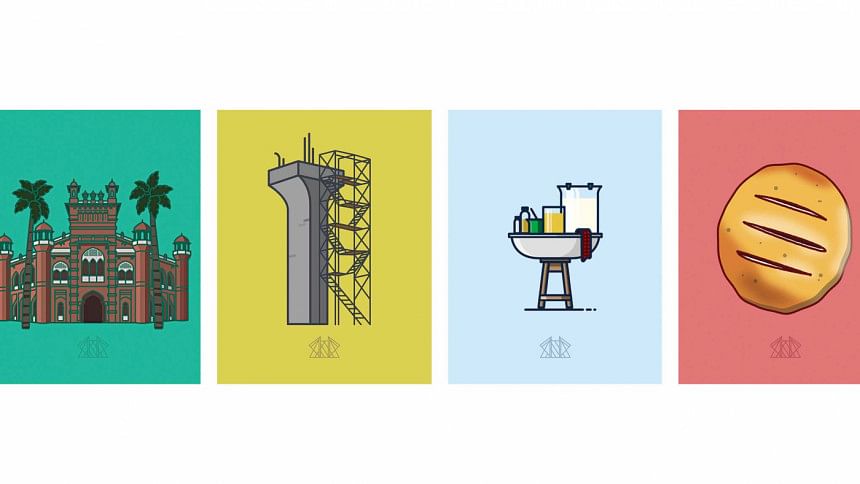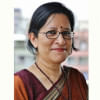Behind Rino’s captivating visuals on Dhaka

As an emerging digital artist, Naznoor Rahman Rino never imagined that his art would gain popularity overnight, even with celebrities like Nuhash Humayun, Shakib Chowdhury, Elita Karim, and Wahid Ibn Reza. His celebrated art series, "Dhaka 101", is inspired by his upbringing amidst the chaos and tranquility of the capital of Bangladesh.

The artist completed his Bachelor's from IBA, Dhaka University, and is currently pursuing his Master's in Development Studies from BRAC University.
As a child, Rino used to make sketches with pen and paper, but was not deft at using watercolours. He often felt confused about colour combinations, as he was not trained in colour dynamics. Painting with watercolours on paper involves permanence, which required him to be very careful about the colours he chose to use. During his university days, Rino started working with Illustrator and Photoshop, through which he realised that he could change the colours he initially chose, and also experiment with them. "That's why 'Dhaka 101' is so colourful. It is me overcompensating for all those years of not using colours in any of my work," Rino chuckled.
Rino aims to give a visual demonstration of everything that symbolises Dhaka through his work. His interpretation of the city involves representing unique elements of the city singularly. He also derives inspiration from many contemporary artists from home and abroad such as Dhaka Yeah, Inksmith, Faiaz Rafid, Banksy, Scott Tusk and Joakim Reidinger.
Rino depicted numerous everyday social issues of the city in his art, such as people not using a foot over bridge to cross the road, a broken road divider and the inconveniences caused due to the Metro Rail construction.
At the same time, he also portrayed the good sides of the city, coupled with current realities. He shows a Dhaka that its dwellers could connect with. His work even touched Bangladeshis living abroad, who felt nostalgic about Dhaka, and wanted their kids to learn about the way they grew up.
Rino admits that it was only about the pictures in the beginning. Soon, he felt the need to explain why they mattered to him. Every time he chose a topic or wrote a caption, it turned into him introducing Dhaka to someone who had never been there. Consequently, the city's monuments, markets, and lifestyles of its people found a place in his art.
Rino calls himself a 'weekend artist' as his full-time job takes up most of his time. "Everything is either about making money or professions, but the whole idea of self-expression behind art is something most Bangladeshis do not understand," he asserts.
He also states violation of intellectual property is another major problem most digital artists face, as people have a misconception that posts online are public property. "It is okay to download a picture and set it as a wallpaper, as it shows appreciation. The problem occurs when someone reposts the same picture or adds filters and a few other elements on Photoshop to show that it has been done by them," Rino adds. His work is very brand-friendly due to their minimalist and colourful properties. Despite placing a logo on the lower middle portion of all his pieces, people mistake it as a design element.
Yet, Rino marvels at how digitalisation has helped many artists to emerge.
"Art is also more accessible nowadays as it has become easier to afford an entry level graphics tablet, which has helped a lot of the younger population to get into it," adds Rino. "Moreover, the overall appreciation for art is increasing in our country compared to the days when people only thought that art was reserved for abstract and high thinkers. Through people like Wahid Ibn Reza, many are able to see that it is possible to make a career out of this creative medium."
The author is a freelance journalist. Email: [email protected].

 For all latest news, follow The Daily Star's Google News channel.
For all latest news, follow The Daily Star's Google News channel. 



Comments